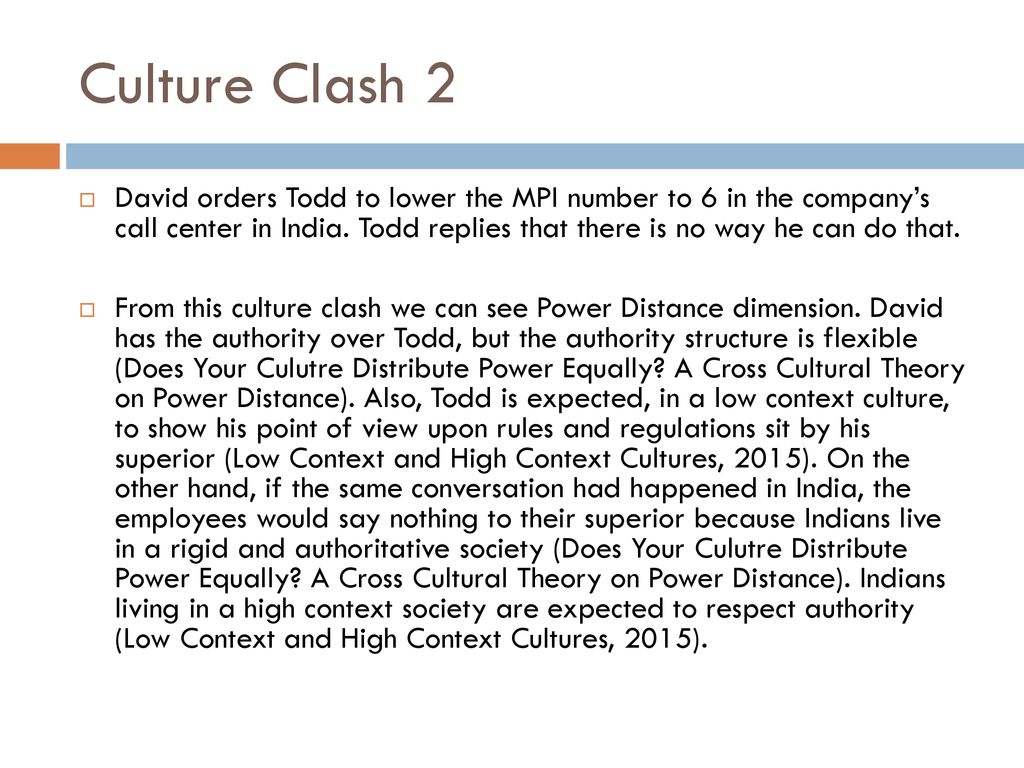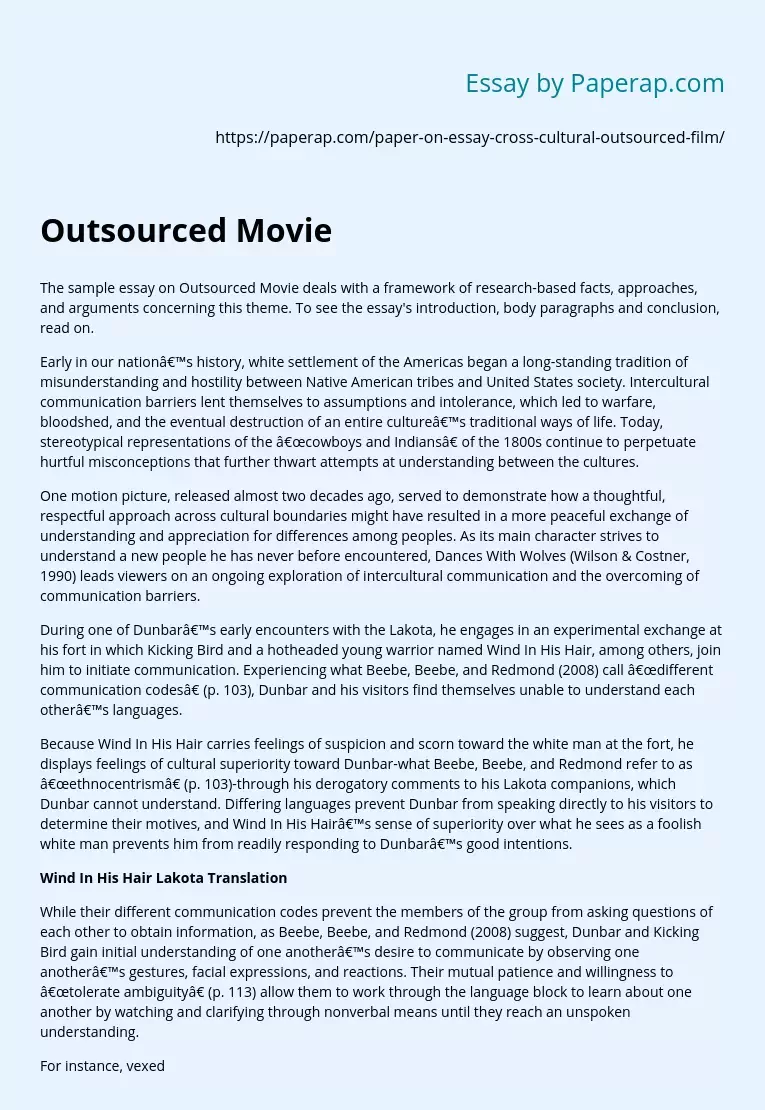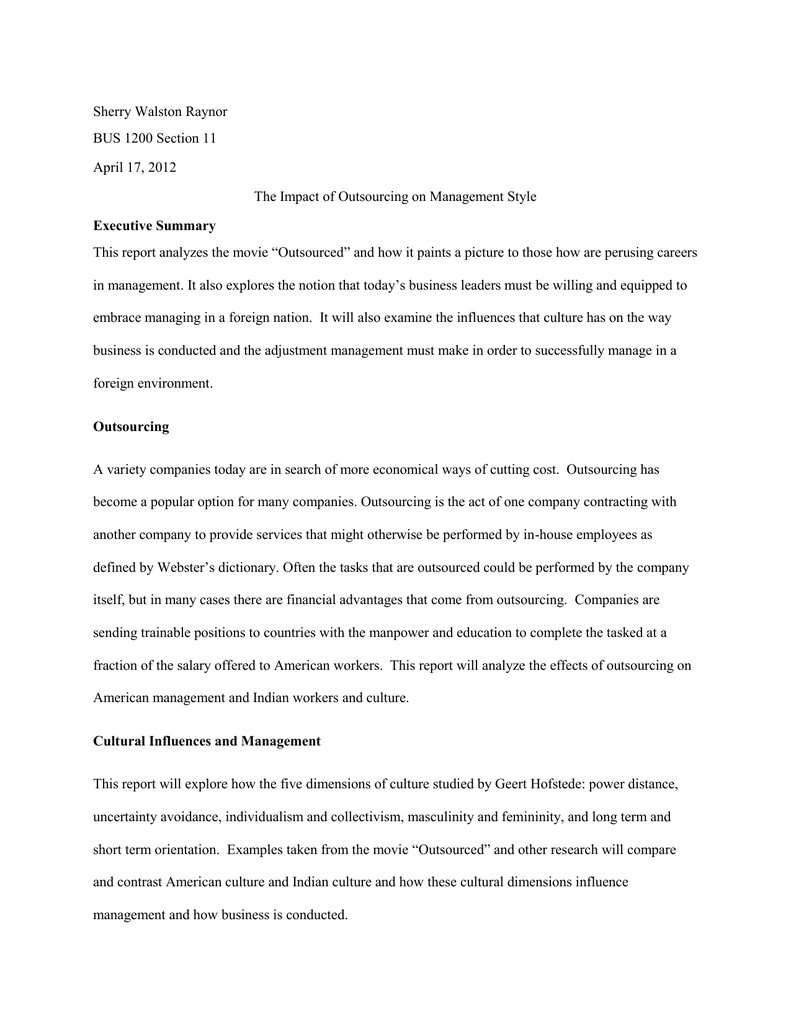"Outsourced" is a romantic comedy film released in 2006 that tells the story of Todd Anderson, a sales manager at a novelties company, who is sent to India to set up a call center for the company after the novelty department is outsourced to Mumbai. The film portrays a number of cultural dimensions, including individualism versus collectivism, high- and low-context communication, and differences in communication styles.
One cultural dimension that is highlighted in "Outsourced" is individualism versus collectivism. Individualism is a cultural trait that values the needs and goals of the individual above those of the group, while collectivism emphasizes the needs and goals of the group over those of the individual. In the film, Todd represents an individualistic culture, as he is primarily concerned with his own job security and success. In contrast, the Indian characters in the film, including Purohit and Asha, represent a collectivistic culture, as they prioritize the well-being and harmony of the group over their own personal goals. This cultural difference is illustrated through Todd's initial difficulty in understanding and adapting to the more collectivistic work culture in India, as well as through the Indian characters' efforts to help Todd learn and understand their cultural values.
Another cultural dimension that is depicted in "Outsourced" is high- and low-context communication. High-context communication refers to a communication style that relies heavily on nonverbal cues, shared experiences, and context to convey meaning, while low-context communication relies more on explicit verbal communication. In the film, the Indian characters tend to use a high-context communication style, as they rely on nonverbal cues and gestures to convey meaning and often speak in a more indirect manner. Todd, on the other hand, represents a low-context communication style, as he tends to rely more on explicit verbal communication and direct statements. This cultural difference is illustrated through Todd's initial difficulties in understanding and interpreting the more indirect communication style of the Indian characters, as well as through the Indian characters' efforts to help Todd learn and understand their cultural communication norms.
Finally, "Outsourced" also highlights differences in communication styles between the American and Indian characters. American communication is often direct and assertive, while Indian communication is often more indirect and polite. This cultural difference is illustrated through Todd's direct and assertive communication style, which clashes with the more indirect and polite communication style of the Indian characters. This cultural difference is also depicted through the use of honorifics and formal titles in Indian communication, which are not commonly used in American communication.
Overall, "Outsourced" portrays a number of cultural dimensions, including individualism versus collectivism, high- and low-context communication, and differences in communication styles. These cultural dimensions are depicted through the interactions and conflicts between the American and Indian characters, as well as through their efforts to understand and adapt to each other's cultural values and norms.








